ETS (the company that created and oversees TOEFL) has made an important change to taking the TOEFL Home Edition. In addition to ensuring that you testing environment meets their high standards, test takers in Chile will now need to use a secondary camera that shows their keyboard and computer screen while taking the test. More specifically, according to the website you need:
- A fully charged smartphone or tablet with a working camera that runs on iOS 12 or later or Android 8 or later
- A stable internet connection
- A sturdy, heavy object to support your phone
What were the requirements before this?
ETS has very strict rules when it comes to taking the home edition. In terms of the environment, you need to show the entire room where you’re taking the test, have your computer facing the door of the room, take down anything in the room (paintings, artwork, etc) that might have writing on it, cover any windows, and more. There are also strict rules about nothing covering your ears, staying on camera, and removing smart watches or any type of wearable technology. While these measures might seem a bit extreme, I think they’re necessary to prevent cheating from happening.
Why the change?
My guess is that people found a way around the strict measures and have been able to cheat. A secondary camera focused on your keyboard and computer screen can add an extra layer of security to ensure the integrity of the test for everyone.
How to set up a secondary camera
I see two main solutions to this new requirement: a phone/tablet stand, or a pile of books or other heavy object to prop your phone/tablet up. I have a phone stand that I use on a regular basis.
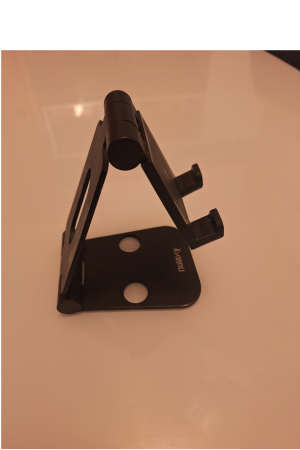
Here’s what the setup with a phone stand might look like:
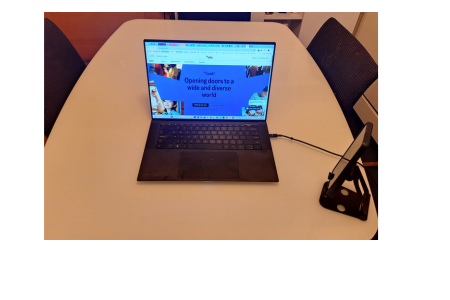
Here’s what using a pile of books might look like:
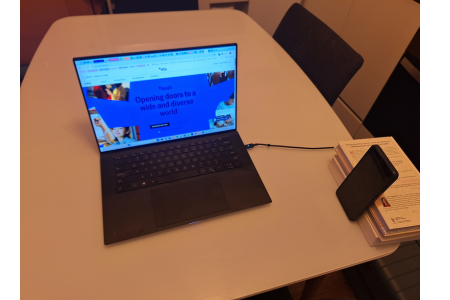
The two main problems with this setup are:
- The written text on the books might not comply with the testing requirements
- You run the risk of accidentally knocking over the books or the phone slipping.
Here’s another setup with two card boxes instead of the books:
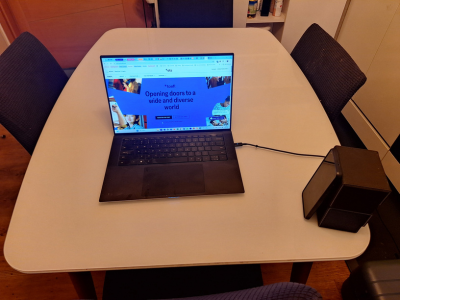
In each of these setups my computer isn’t facing the door. This is what the test proctor would see in my background:
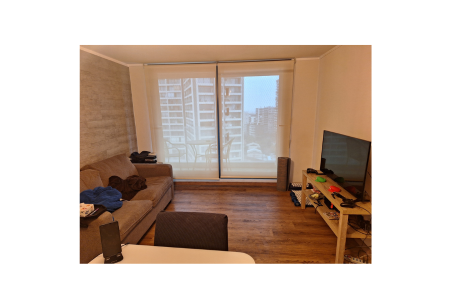
I cleared away most things that aren’t needed, but the test proctor might say that I need to remove the yoga mat.
Even with all that, the test proctor might require me to change my setup so that the door to my apartment is within their view. Based on the layout of my apartment it would be difficult (but not impossible) to move my table, sit in a way that the door is visible, and keep my computer plugged in.
My thoughts
I think everyone can agree that enhanced security measures are a good thing to preserve the integrity of TOEFL. Despite that, it places an extra burden on test takers. Not everyone necessarily has a smartphone or tablet that meets the requirements, and asking to borrow someone else’s phone or tablet for over 2 hours might not be possible for everyone. This is on top of the requirement to have a quiet space where people can take the test without any interruptions and no one else in the room.
It’s also unfortunate that dates to take TOEFL at test centers in Chile are scarce. Even if you do find a date, it’s possible that it will be cancelled a few days before the test date, which only leaves you with the home edition as the only option.
Being sure you’re prepared
I cannot stress enough the importance of preparing your environment and technology for the TOEFL Home Edition. ETS takes the integrity of the test and compliance with requirements very seriously, and there are no refunds or rescheduling of tests if you don’t meet the requirements.
I suggest reading through this detailed description of the requirements and watching these short videos to help you prepare at least a few days before your scheduled test date.
Once you’re confident that you are prepared, use this checklist on test day to double check everything.
Feel free to share this blog post with anyone that is preparing TOEFL, and if you need any help preparing for TOEFL feel free to get in contact.
Thanks for reading and I hope this was helpful!



